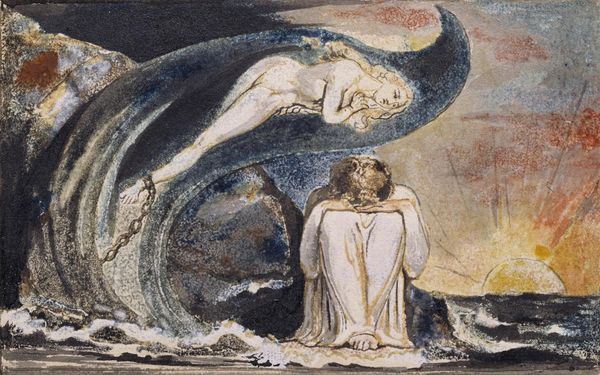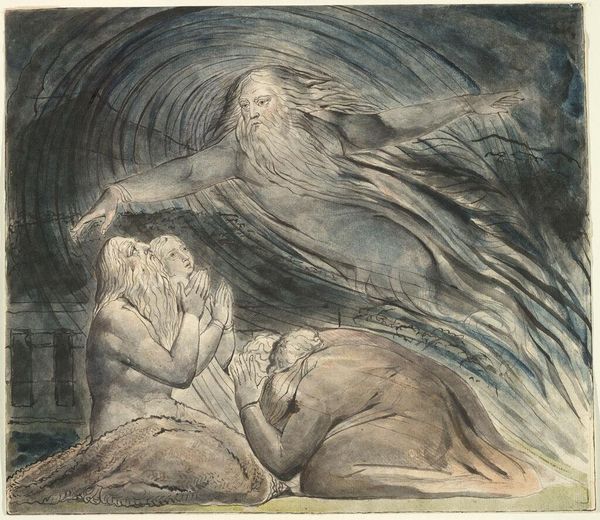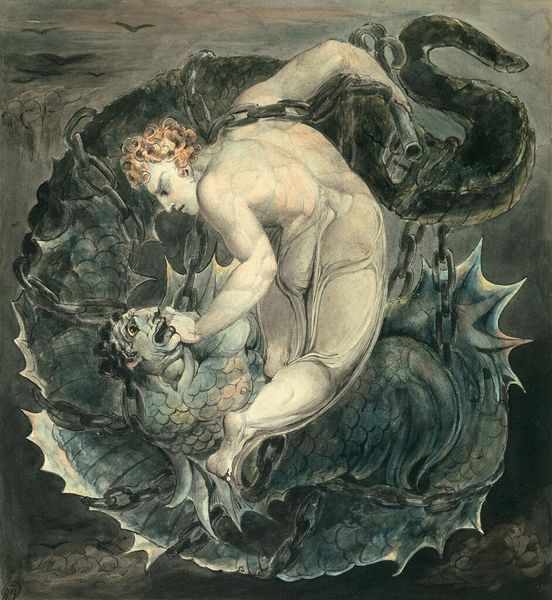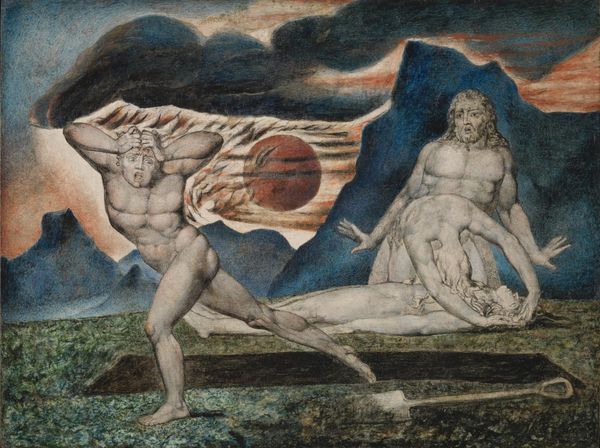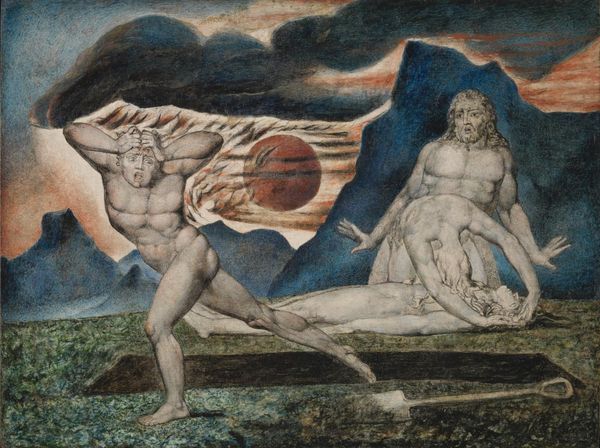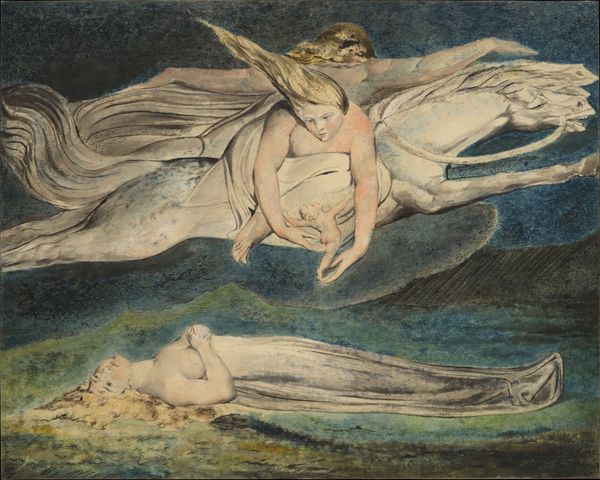
Dimensions: support: 109 x 102 mm
Copyright: NaN
Editor: Here we see William Blake's "Plate 2 of 'Urizen': 'Teach these Souls to Fly'" from around 1794. The watercolour feels so turbulent. What do you make of it? Curator: Blake was deeply critical of the Enlightenment's emphasis on reason, seeing it as a form of oppression. Notice the chained figure, seemingly weighed down, contrasting with the floating figure. Could this be Blake’s commentary on the chains of societal expectations? Editor: So, the figures represent a struggle between reason and, perhaps, imagination? Curator: Precisely. Blake used his art to challenge dominant ideologies and advocate for individual liberation. The chains bind not just the body, but the mind. The floating figure gestures towards a potential for freedom. Editor: It's amazing how relevant Blake's critiques still feel today. Thanks for sharing your insights! Curator: My pleasure. It's crucial to understand art in the context of power and resistance.
Comments
tate 8 months ago
⋮
http://www.tate.org.uk/art/artworks/blake-plate-2-of-urizen-teach-these-souls-to-fly-n03696
Join the conversation
Join millions of artists and users on Artera today and experience the ultimate creative platform.
tate 8 months ago
⋮
This design was made for Blake's poem called The Book of Urizen. The woman is Enitharmon, who in Blake's mythology symbolises Pity. In Urizen she is made pregnant by Los and 'groaning Produc'd a man Child to the light.' This child was Orc (symbolising Revolt), who is seen here with his mother. Los was jealous of his son, and chained Orc to a mountain. Here Enitharmon seems to be introducing Orc to the idea of liberty, before he is finally chained up. Gallery label, September 2002
